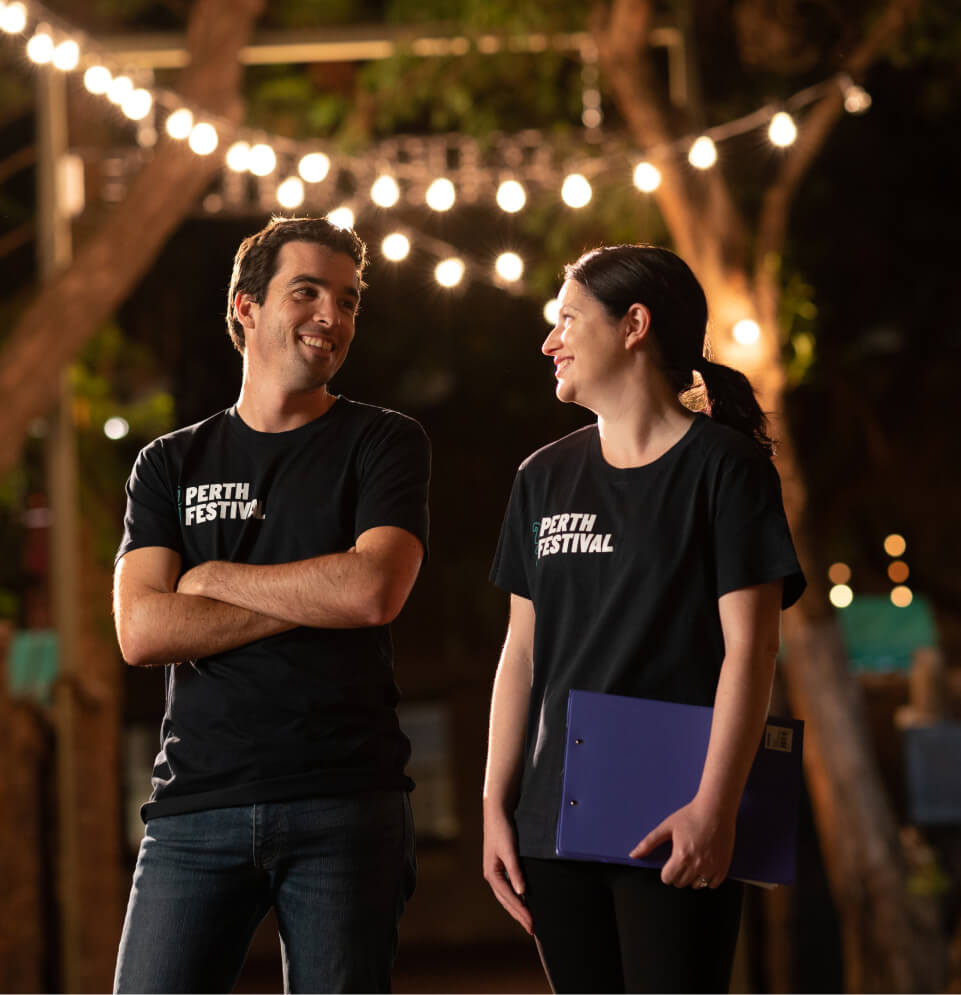Conserving and engaging with Western Australia’s heritage
The National Trust of Western Australia (National Trust) is the peak independent community body promoting the conservation and interpretation of Western Australia’s heritage sites for future generations. The National Trust manages a significant number of the State’s heritage assets, including a portfolio of properties and collections. Additionally, it coordinates the activities of hundreds of volunteers who assist across a range of activities including providing cultural heritage tourism experiences for visitors.
Towards a range of heritage conservation and community education activities across the State for the WA community.
National Trust of Australia (WA)
3/28/2018
$4,813,223
Lotterywest
$2,824,480
State-wide
General Community
- Close collaboration with the National Trust Aboriginal Advisory Committee to develop the ‘Consultation and Engagement Framework for Noongar Boodja’.
- Improved visitor and volunteer facilities leading to increased participation and engagement with community members.
- Delivery of a volunteer training program that built confidence and skills amongst volunteer cohort.
- Collection and analysis of data has lead to data driven decision making across the National Trust’s operations.
- Volunteer training, reward and recognition had tangible benefits for the volunteers, the organisation, and visitors.
- Conservation cleaning alerted volunteers to the special needs of National Trust collections and their role in supporting the care of collection objects.
- Providing appropriate quality tools helped volunteers care for places and keep themselves safe.
- Improved marketing collateral helped raise the profile of National Trust sites and increase visitation. It also helped promote dual naming of sites.
- Managing a comprehensive program over three years that covered many aspects of the organisation’s operations was key to the success of the program, but also a challenge.
- Raising awareness that the National Trust is a membership organisation.
- Ensuring accurate data capture and record keeping processes were in place across the full scope of activities.
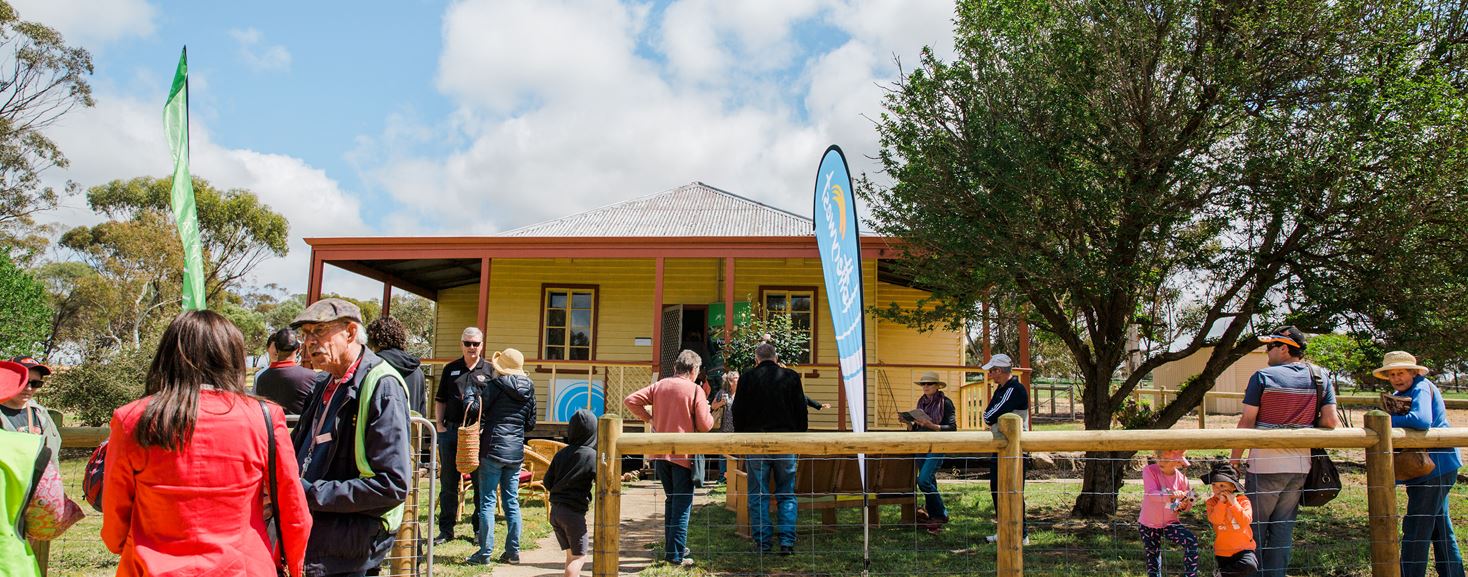
Opportunity
In 2016, the National Trust received a Lotterywest grant towards conservation, interpretation, promotion of cultural heritage, and community engagement at Ellensbrook in Margaret River. This grant was the first time the National Trust had developed and delivered a holistic and broad reaching program of activities for a site, and it demonstrated how impactful this approach can be.
At the time of this grant (2018), the National Trust had a portfolio including 64 sites across Western Australia and more than 20,000 collection items. The organisation was focused on day-to-day operations with limited opportunity or resources to plan and operate strategically and sustainably.
Using the key learnings from the previous Ellensbrook grant, the National Trust developed a program of activities across multiple sites in their care. This enabled them to understand the heritage values of National Trust sites, engage with the community and gather information required to develop strategic and sustainable plans.
Approach
The National Trust approached Lotterywest to support a three-year program of activities focused on developing and implementing best practice approaches in the sustainable management, conservation, and interpretation of heritage sites. The program included activities that would:
- Support and grow National Trust membership.
- Support and grow National Trust volunteer programs.
- Enhance community engagement.
- Support National Trust Aboriginal heritage programs.
- Improve access and inclusion to key National Trust sites and services.
- Increase understanding of the heritage values of National Trust sites and collections.
- Address urgent conservation works, improve visitor experience, and increase understanding of the heritage values of priority National Trust sites.
Impacts and outcomes
Impacts for the National Trust and the broader community were wide-reaching across the three years. Examples of activities delivered include:
- Membership engagement and surveys.
- Volunteer programs, equipment, and training activities.
- Community engagement, events, and workshops.
- Development of the ‘Consultation and Engagement Framework for Noongar Boodja’.
- Goldfields Aboriginal Language Centre projects and equipment.
- An Access and Inclusion Plan.
- Preparation of a thematic history.
- A comprehensive assessment of collections.
- Conservation and interpretation projects across key National Trust sites open to the public.
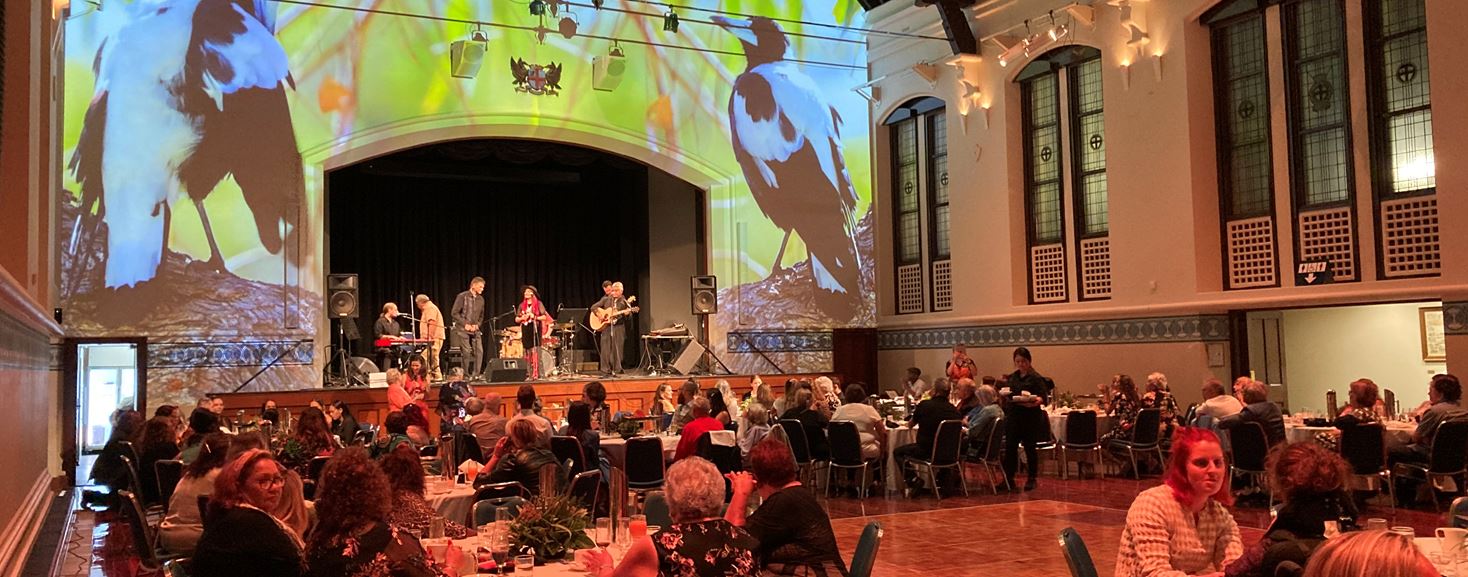
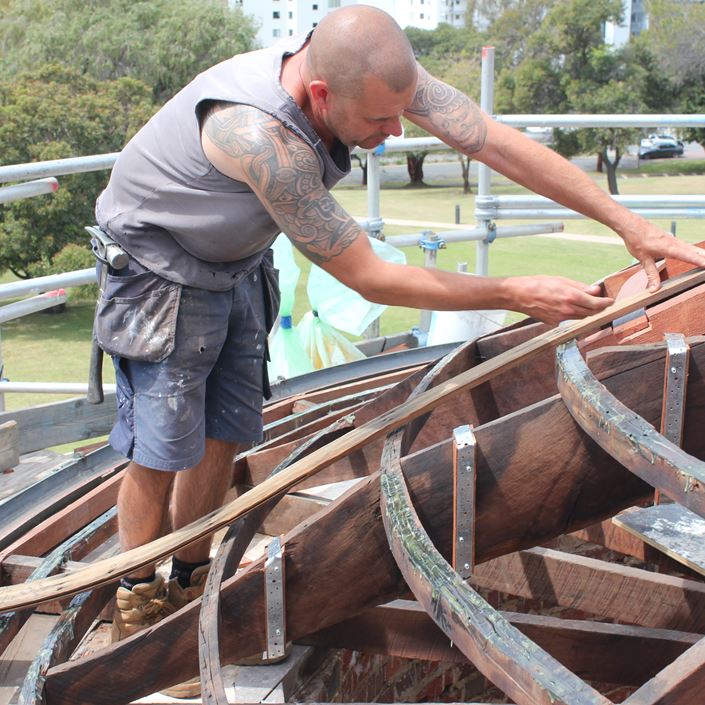

“The grant was transformative for the National Trust: it opened doors which led to new ways in how we work, enhanced our capacity to implement and manage projects, and assisted us to increase community participation in heritage. The grant made a material difference to our operation, enhanced our ability to achieve our mission and continues to have a positive impact well beyond the completion of the funded projects.” Julian Donaldson, Chief Executive Officer
Across the three years, over 470 volunteers attended more than 30 face-to-face and online training sessions, across Workplace Health and Safety, customer service and storytelling, and conservation cleaning. The ability to work with specialists to deliver training ensured volunteers were more equipped to perform their roles, leading to increased satisfaction levels amongst volunteers.
In the South West, where the majority of the National Trust’s property portfolio is located, the organisation worked with Kooyar Wongi to review current practices in working with Aboriginal people and how to appropriately acknowledge the history of heritage sites. The resulting ‘Consultation and Engagement Framework for Noongar Boodja’ has guided a paradigm shift in the way the National Trust views and promotes heritage sites in its care. Guided by the National Trust’s Aboriginal Advisory Committee, the Framework’s priorities centre on building good relationships with Aboriginal people to inform the way the organisation works. While developed for Noongar Boodja (South West of Western Australia), the framework has supported engagement across the National Trust’s activities in other regions as well. This included working with the Goldfields Aboriginal Language Centre to support work recording and linguistically analysing at-risk languages from across the Goldfields.
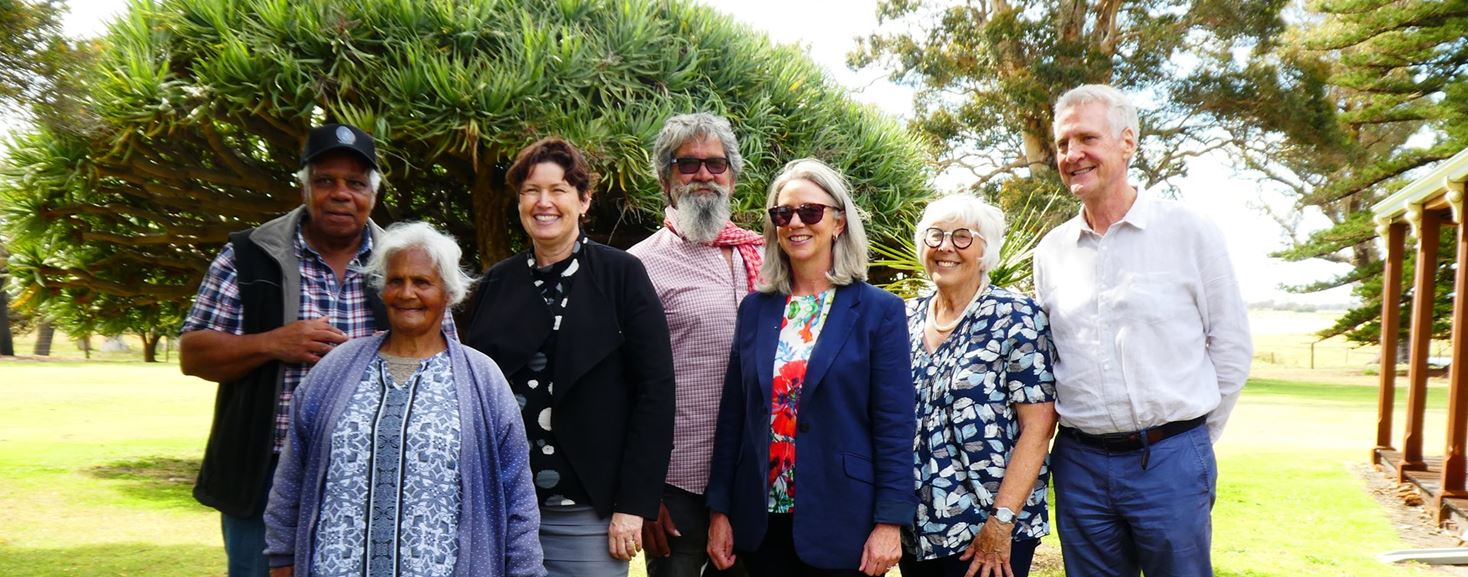
“The process of consultation and engagement undertaken in the development of this framework has been in keeping with best practice stakeholder engagement principles when dealing with Aboriginal stakeholders and has challenged the National Trust to adopt a more holistic, consistent approach to project management to ensure these recommendations become part of everyday practice.”
Irene Stainton, Chair NTWA Aboriginal Advisory Committee
The National Trust also delivered projects which improved visitor amenities, engaged with community members, researched sites, and conserved assets across a range of sites. These include Avondale Farm, East Perth Cemeteries, Old Blythewood, the Old Observatory, Peninsula Farm, Royal Perth Hospital Heritage precinct, Samson House, Strawberry Hill, Wonnerup House, and Woodbridge. At Strawberry Hill, the improvement to amenities has improved volunteer experience, with people reporting increased engagement and satisfaction.
"The Hub certainly has the wow factor, there isn’t a visitor who doesn’t comment, saying what a wonderful building it is. The volunteers love it and really appreciate having such a wonderful space to work in, they are never in a hurry to leave and often just call in when they are in the neighbourhood. The airflow and lighting are spectacularly efficient and it definitely fulfils the aim of getting people to linger. We have come a long way from when you asked me if I thought a separate visitor centre would be a good idea. I think everyone who put in so much effort to make it a reality can be justly proud." Judy Williams, Lead Volunteer, 2021
55
Communty events delivered.
5
Sites improved with interpretation.
7
Sites where conservation work was undertaken.
3,000
Provenanced collection items assessed.
470
Volunteers trained.
8
New place brochures promoting sites and dual naming.
What worked
Development of a framework for Aboriginal engagement
Development of a Framework for Engagement on Noongar Boodja has supported the establishment of best practice operations for working with Aboriginal people and appropriately acknowledging the history of sites within the organisation’s care. It has transformed the National Trust’s approach from one focussed on European built heritage to a more holistic understanding of the cultural landscape associated with each site.
Collecting data to enable informed decision making
The member survey and subsequent research by strategic experts, Catalyse, enabled the National Trust to make evidence-informed decisions about membership engagement and support. As a membership-based organisation, it was important to understand members’ motivations for being part of the National Trust and build engagement with this cohort in a responsive and appropriate way. Researching the provenance of National Trust collections identified that around 3,000 of the 20,000+ collections have direct provenance. This information helps improve storytelling at heritage sites.
Bespoke community events
A variety of community events were held at different National Trust sites, creating opportunities for broad engagement with the community and increased media opportunities. These engagements and events increased participation in and awareness of Western Australia’s cultural heritage across the general community.
Supporting volunteers
Providing volunteer training across multiple areas increased the confidence and capacity of volunteers to engage with visitors, to provide robust commentary, to deal with difficult situations as they arise, to perform their work safely and with appropriate equipment, and to represent the National Trust in a professional and self-assured manner. As the front of house for the National Trust, this increase in skills and abilities has a direct effect on visitors and ultimately, the reputation of the National Trust.
Conserving and interpreting National Trust sites
Addressing urgent conservation works and improving interpretation of National Trust sites has greatly improved the visitor experience, and increased understanding of the heritage values of priority places. Additionally, it has enabled a better understanding of these sites in their cultural landscape context (especially inclusive of their Aboriginal heritage values) and contributes to the National Trust’s reputation as a custodian of WA’s heritage.
Key challenges
A comprehensive program can split focus and resources.
The program of activities delivered over the three years was comprehensive and covered many aspects of the organisation’s operations. This was both key to the success of the project, but also a challenge. It’s important to consider the realistic allocation of budgets across a project with such breadth and take into account organisational resourcing to deliver such a wide-reaching project.
Keep accurate records for acquittal and impact reporting.
Ensuring accurate data capture and record keeping processes were in place across the full scope of activities was challenging. Ensuring that appropriate processes set up for the duration of the initiative would assist in streamlining preparation for acquittal reporting and provide evidence that supports impact reporting.
Focussing on urgent works across multiple sites
With such a broad portfolio of sites, there are always urgent works in need of prioritisation. The National Trust has a goal to try and complete works on one site and then move to the next, however, this is not always possible, particularly when there are urgent works across multiple sites. All work completed was high priority and enabled significant progress towards the National Trust’s goals, however when applying for grants in the future it will aim to focus on a more comprehensive and sequential completion schedule at fewer priority sites.
Acknowledgement of Country
The Western Australian Community Impact Hub acknowledges and pays respect to the Traditional Owners of the land on which we are based, the Whadjuk people of the Noongar Nation and extends that respect to all the Traditional Owners and Elders of this country. We recognise the significant importance of their cultural heritage, values and beliefs and how these contribute to the positive health and wellbeing of the whole community.

![Bob Blackburn[1]](/media/hqiankcf/bob_blackburn-1.jpg?anchor=center&mode=crop&width=870&height=300&rnd=133045321363600000&quality=80)
![Carnaby's Cockatoo Flying Over Restoration On Monjebup Reserve. Photo By Krysta Guille[1]](/media/3xkoo5ve/carnaby-s_cockatoo_flying_over_restoration_on_monjebup_reserve-_photo_by_krysta_guille-1.jpg?anchor=center&mode=crop&width=870&height=300&rnd=133053022173100000&quality=80)



